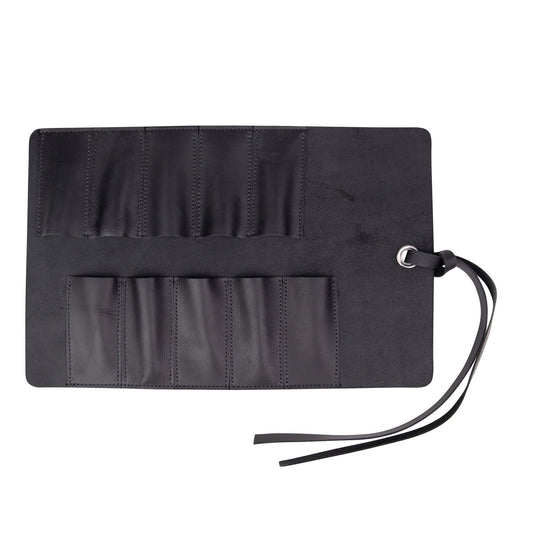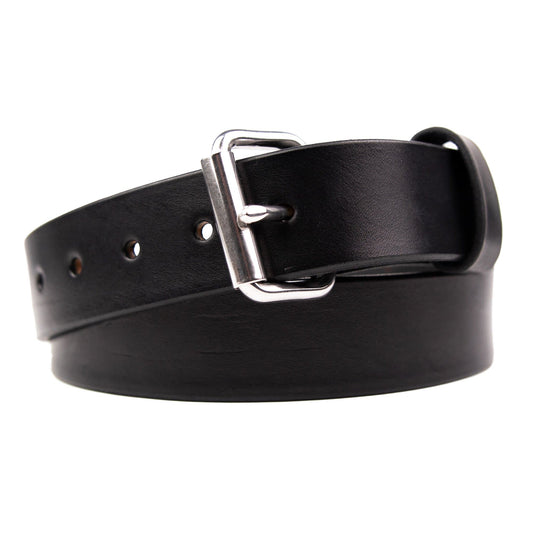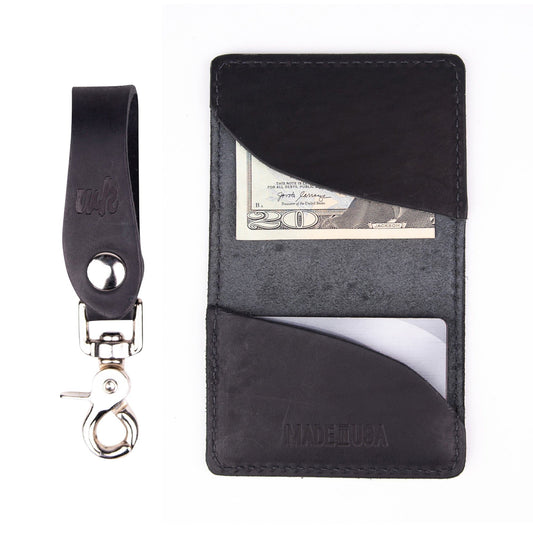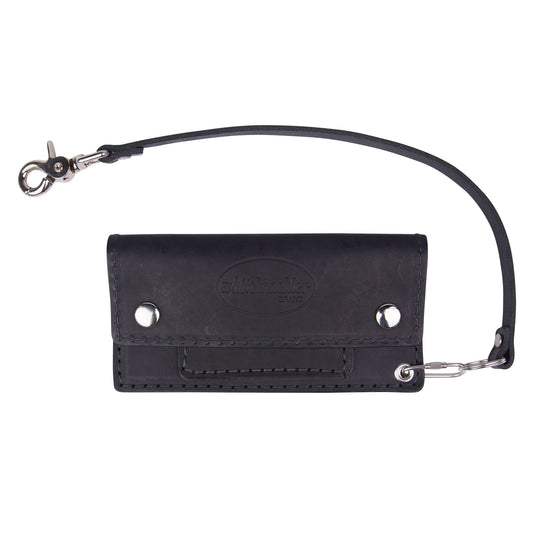We, today, have the benefit of being able to read the history of the Ford Mustang as chapters in a book. When assembled, the story creates a vivid picture of how the pony car affected the world, moving us car enthusiast’s to deep emotion. It creates a desire to be a part of the story, to hold onto something that identifies us with one of the most significant vehicles in American automobile history.
Enter the 1964 ½ Ford Mustang. Yes, a half. The few months in 1964 (April - July) where the Mustang was produced prior to the official production of the 1965 model are the seedling examples of the vehicle. Precious firsts that, when produced in Dearborn Michigan, were marked by a few unrefined features that were quickly replaced for 1965. For car enthusiasts, those features are subtle marks that these Mustangs are special.

The truth is that it is us car enthusiasts who coined the 1964 ½ language. As you may well know, no handbrake can stop the momentum of popularity of a vehicle placed on a pedestal by car enthusiasts. The history that flows out of these Mustangs and their unique production mean that they are legendary; if you want to be a part of the story, there is no greater Mustang to own.
For the rest of this article, we’re going to turn to page one and discover the 1964 ½ Mustang to understand how it captured the attention, and wallets, of 1960s America, blazing a path on its way to becoming a legend.
Development & History

In the early 1960s, Ford General Manager, Lee Iacocca, saw the appetite for sports cars. European options were sexy and exotic, while GM was already benefiting from the craze for a small sporty automobile with the Corvette. Ford’s own Thunderbird was a sporty option in the lineup, but failed to capture the same feeling for buyers. Iacocca commissioned the “T-5” project with the goal of introducing a solution to be embraced by the masses, a car that EVERYONE would want.
Released at the 1964 World’s Fair in April and the official pace car of the Indy 500 the same year, the Mustang was an instant success. We’ve been talking about these first ½ year models as if they are highly exclusive, but the truth is, Ford sold thousands! According to some reports, over 20,000 in the first day alone.

Crucial to its initial popularity was a factor that easily could have been it’s demise - the wide availability of options. Rewind briefly to 10 years earlier when the Corvette was released; their trip to the bargain bin proved a near fatal blow for the sports car. Ford instead took some of the best parts of other vehicles in their lineup to both cut costs and put desirable options under the hood. Car & Driver, in a 1964 article about the Mustang’s release, says,
“Out of this situation sprang the advantage of an extremely wide availability of options for the Mustang, selected from the Falcon, Fairlane and Galaxie series. Briefly, it gives the customer a choice of four engines, three clutches, seven transmissions, two driveshafts, four brake systems, four wheel types and three wheel sizes, three suspension systems, and three steering systems. This seems slightly overwhelming until one remembers that only certain combinations are authorized,”

Yet for all of the options, one that was not a choice is the prime way to identify the Mustangs. Solely for the first few months, the Mustang kept its battery topped off with a 12V generator. After this, the Mustang switched to the ever-popular alternator (a generator uses DC power, alternator AC). Beyond this, smaller quirks set apart the ½ year from future models (a long oil dipstick, color-matched door locks, fan speed options on the dash), as do the the engine choices.
Engine
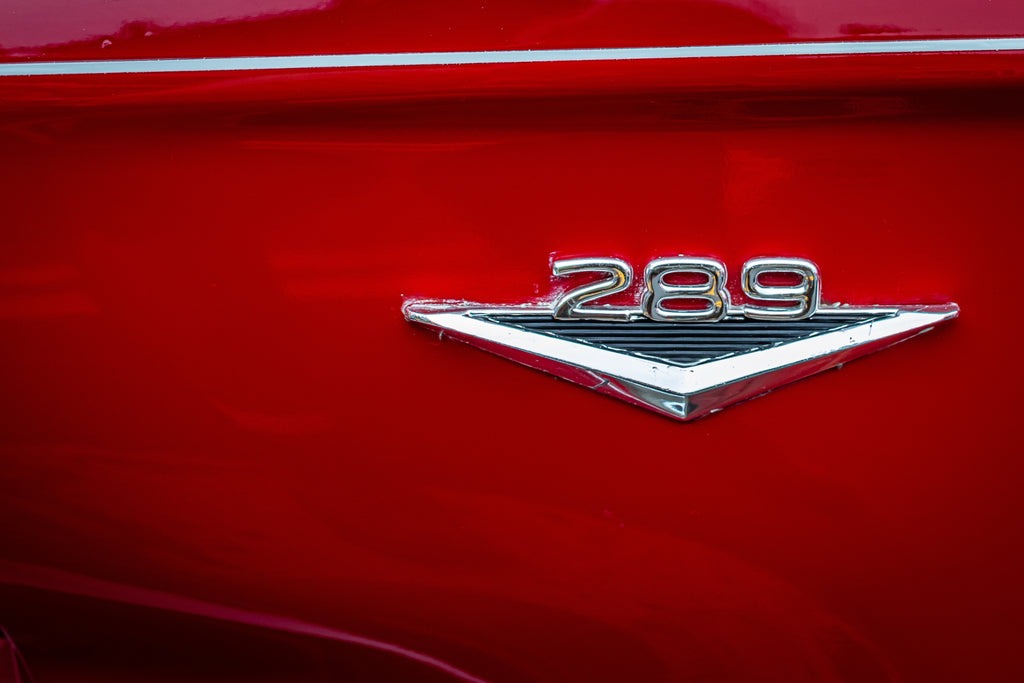
Ford, in the early 1960s, was grooving along thanks to the success of their Galaxie, Falcon, and Fairlane models. Powering these legends of old was a set of engines that Ford happily plucked for use in the first Mustangs. When walking into the dapper showroom of the sixties, customers were offered four different engine options (can you imagine this today!?). We’ll go into each, the basic 170-cu in (cubic inch) inline-6, the 260-cu in V-8, the 289-cu in V-8, and the top-of-the-line high performance 289-cu in V-8. For the 1965 models, the inline-6 was replaced by a larger 200-cu in inline-6, the 260 V-8 was dropped, while an additional 289 was added.

We’ll start with the underwhelming inline-6 producing a mere 101 horsepower. Pulled from the two-door Falcon - Ford’s compact car of the time - the smallest of engines in the Mustang is not one that enthusiasts desire today. While it got the job done, it did little else to get driver’s excited.
The 260-cu in V-8 pushes the power up to 164 horsepower, an adequate number for the small four seater. This engine is taken from the Fairlane, where it’s compression ratio of 8.8-to-one puts peak power down at 4400 rpm, same as the inline-6. With the next engine in the line up a slightly larger V-8 with 50 more horsepower, it makes sense that Ford saw no reason to continue this option for 1965. However, with it’s previous existence in the Fairlane, it was an easy add for the time being!
The first of two 289-cu in V-8 engines available in the Mustang puts out 210 horsepower. This engine proved to be popular with its four-barrel carburetor getting the job done. However, it was naturally outshined by the high-performance 289-cu in V-8, which though it shared the size with the former, is largely different. Crafted from an iron alloy, the engine, which originally was available in the Fairlane, takes a number of performance learnings from when the car was the pace car for the Indy 500 including a cross-bolted crankcase and careful engineering to minimize unbalance at high RPM.
Chassis

Aiding in the allure of the 1964 ½ Mustang is the variety of choices not only in engines but in transmission and chassis set ups.
As Car & Driver exclaimed in our earlier quote, the pony car can be optioned with 7 different transmissions. We’ll spare you the gear-y details, but of the three speed variety, there was a three speed manual, with non-synchro first gear; a beautifully named 3 speed Cruise-O-Matic, which was Ford’s first automatic transmission; and a four speed manual with all synchro gears. We get to seven thanks to variations on gearing ratios with more powerful engines delivering the power more readily to those enthusiasts looking for the fun of “four on the floor.” Drivetrains to get that power to the rear are pulled in some form from either the Falcon, Fairlane, or Galaxie.

Speaking of which, this classic front-engine, rear-wheel-drive coupe relies heavily on it’s body on frame design, with designers boasting that its frame was so rigid, it could be driven without a body. Aiding in this effect is a central propeller shaft tunnel and torque boxes.
The front suspension on the Mustang again finds us pulling parts off of the Ford Falcon. Placing the two side-by-side, it is easy to see why with their similar proportions. The front suspension consists of an upper wishbone and lower control arm, which finds rigidity in connection to the frame above and forward. Most would say that this setup leans toward comfort until pursuing the handling package, which adds stiffer springs, special shock absorbers, and a larger anti roll bar. In the rear, the Falcon again swoops in to aid the Mustang, though the increased power-to-weight ratio means the entire setup was beefed up.
Once you’ve gotten going in the Mustang, stopping is accomplished by either two sizes of drum brakes or disc brakes. The drum brakes come in two varieties depending on engine size while most interestingly, a power booster was optional. Nowadays, we’d prefer the move over to disc brakes for performance, but the booster provided a supposed 50% decrease in pedal pressure. Ah, the 60s.
Impact On Muscle Car Culture

The actual, technical specifications of the original Ford Mustang truthfully only tell half of the story. They are the historical records that capture the truth but fail to truly capture the emotion and impact imparted by this vehicle. This, as the title says, is the original pony car. It’s instant popularity kicked off a wave that swept up everything in its path, altering all production plans of manufacturers in the United States and globally. We can unequivocally say that the Mustang changed the car landscape. It is responsible for bringing us the Challenger, released in 1969, the Charger, released in 1966, the Camaro, released in 66, and ultimately for muscle car power wars! It sold a whopping 22,000 units on the first day of its release and over 120,000 in that first year alone!
This Mustang revolutionized car culture, yes, and despite it not being an exclusive, low volume vehicle, its impact is so great that enthusiasts have never stopped loving these first examples of the vehicle. It is a car that many want not only because of the technical specifications, but because of what it signifies. The reality is that the car could have any number of quirky mishaps, subpar performance, or lackluster quality and it wouldn’t matter because it heralds a shift with its very presence. These ½ year production cars are icons, elder statesman that enthusiasts have thankfully preserved and honored for decades.

However, the reality also is that beyond the nostalgic, the Mustang deserves every bit of its success. History aside, it is a stunning vehicle. It caresses the eyes with its form, one that has never gone out of style. Undoubtedly, this original pony will be revered for years to come, and us car enthusiasts will be ready to keep that history alive.


